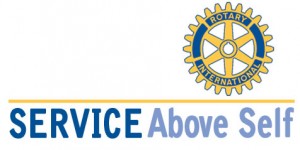Training
Training
11 September 2014 No Comments on TrainingBelow, by argument, is some brief information to get to know Rotary better:
The Rotary International Anthem
At the third meeting of the Rotary International Board of Directors 1999–2000, an arrangement of the march from the Egmont overture by Ludwig van Beethoven was chosen as the Rotary anthem. The piece, according to a statement from Evanston at the time, “can be played at appropriate occasions, such as flag ceremonies.” Egmont assumes the traits of a pure Sturm und Drang hero: nobility of soul more than of blood, in which the passions mingle, superimposing tolerance and freedom as essential components of a universal love for all humanity, an ideal and inevitable aspiration for justice. The tragedy closes with the death of the protagonist: a death which evokes freedom and triumph, sealed by the Siegessinfonie (symphony of victory), a triumphal fanfare with full orchestra that celebrates the hero who fell for freedom. It it precisely this last piece which crowns the overture that is used as the Rotary Anthem. The Board chose the historical drama in five acts by J. W. Goethe set to music by Beethoven because Egmont is the hero of freedom, religious tolerance, steadfastness, the struggle against dictatorship, respect for the rule of law in his country and for its people: ideals that foreshadow those of the Rotarians. The conclusion of the overture transfigures death into a symbol of victory, and a Rotarian perspective can be seen in the choice of this final coda (allegro con brio), the transformation of disasters and scourges that Rotary turns into victories: against polio, against hunger, against illiteracy, against water shortages, against infant mortality … on a front that encompasses the whole world.
The mottos of the Rotary Club of Sassuolo and in Rotary International
Ubi amici, ibi opes: where there are friends, there is wealth to live the emotion of a dream and let us all build tomorrow together, because you learn Rotary by living it and you need to be in Rotary and not of Rotary in order to say that finally, I’m a Rotarian and serve to be Rotarian because it must always be remembered that Rotary means commitment and sharing. This opening sentence is a collage of some of the mottos that have accompanied the activities of our Club, founded in 1971, over the years. These mottos ‘of ours’ give broad expression to the concept of service and friendship – or at least the ideal. They are the pillars and raison d’être of Rotary in general, and naturally and generally of our Club as well. The first motto of Rotary International, “He profits most who serves best,” was approved in 1911 during the Convention in Portland, Oregon.
In the same period, the President of the Rotary Club of Minneapolis, Minnesota, stated that the best way to organise a Rotary Club was to follow the principle that he had adopted: “Service, not self.” These two slogans were adopted as mottos of Rotary International, during the Convention in Detroit in 1950: “He profits most who serves best,” and “Service above self.” The Council on Legislation in 1989 established that the official motto would be “Service above self,” because it better expressed the philosophy of altruistic service with greater concision.
The emblem: the Cogwheel
The first lapel pin in the history of Rotary was made by a member of the Rotary Club of New York, John Frick, on 14 October, 1909. The forerunner of today’s Rotary pin featured the wheel in its earliest representation: with eight spokes, no cogs, and no Woodruff key. Images of a wheel with eight spokes have been found in Greek paintings at Thebes dating to 1350 BC. The wheel, in itself, became the symbol of Rotary in 1905, when an engraver, Montague Bear, joined the club of Chicago and offered to design a permanent emblem. Paul Harris explained the choice by describing the wheel as a symbol of “Civilization and Movement”. Members rejected the engraver’s first idea, a plain buggy wheel (three spokes, no cogs and no key), because the message conveyed seemed “meaningless and lifeless”. So, to give the appearance of action, the engraver embellished the image: a wheel in motion on a bed of clouds (fourteen spokes). In 1918 a Rotarian engineer from Minnesota, Oscar Bjorge, petitioned the Rotary Board to amend the design, because a wheel with nineteen cogs would never work. The emblem also had irregularly spaced, square-cornered cogs of disproportionate size. There were other revisions to the symbol in 1919, 1921 and 1924. The standard description of the existing design, complete with key, was approved at the 1929 Dallas Convention. The design has been unchanged ever since, and the Rotary International cogwheel appears today throughout the world on millions of pins, flags, ties and jewellery of every sort.



